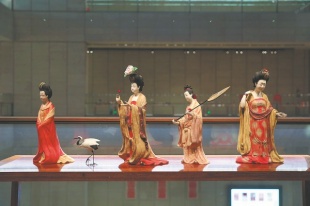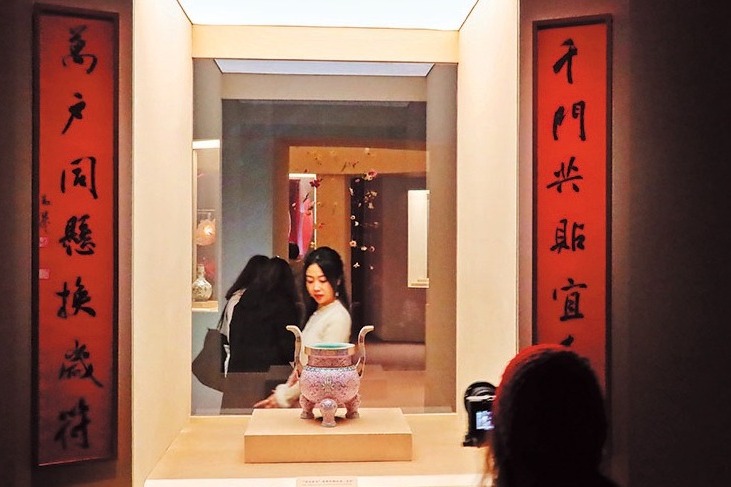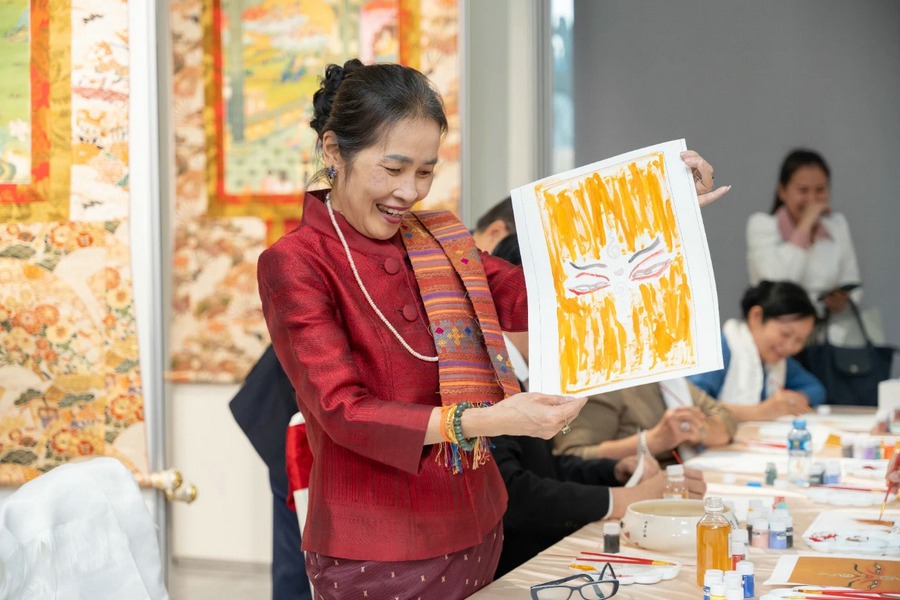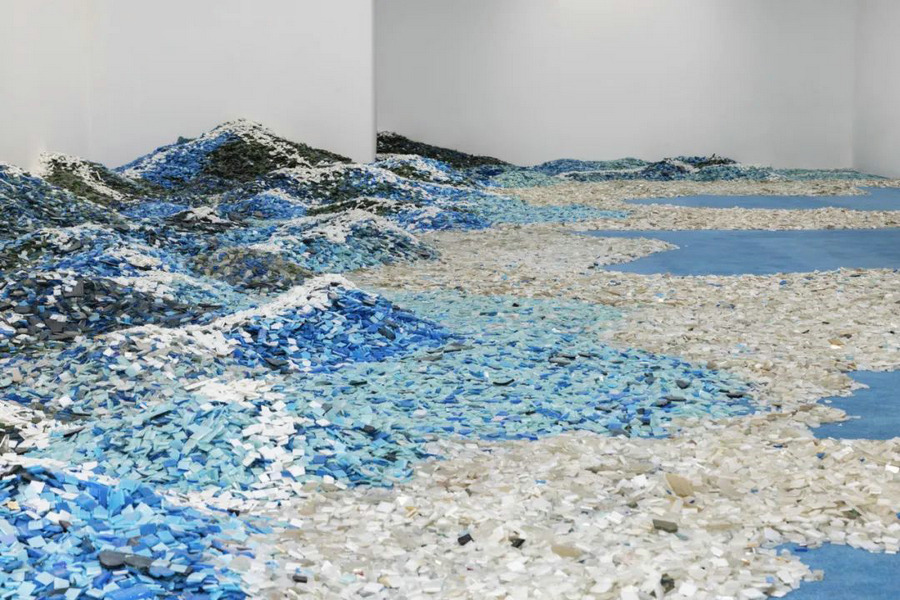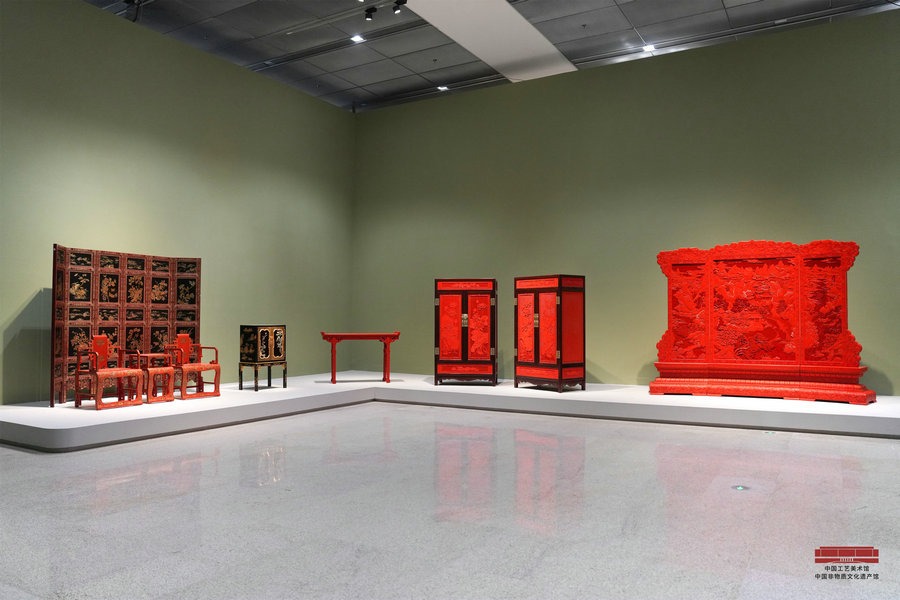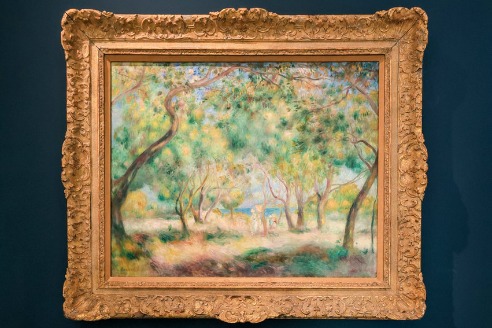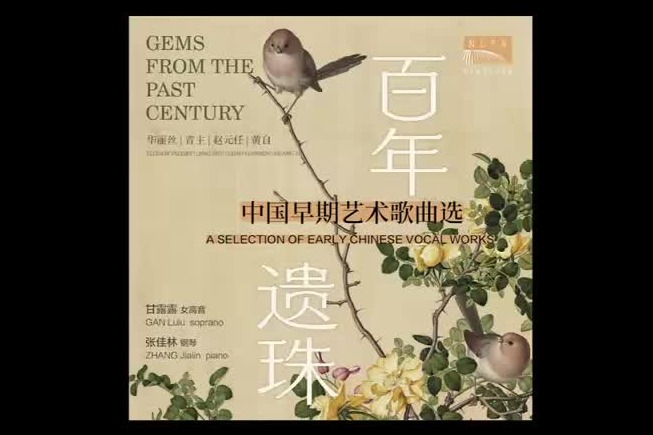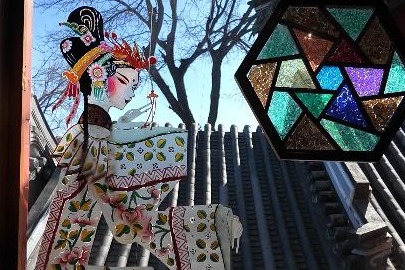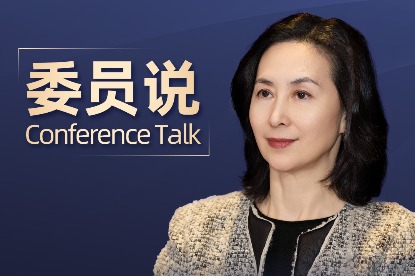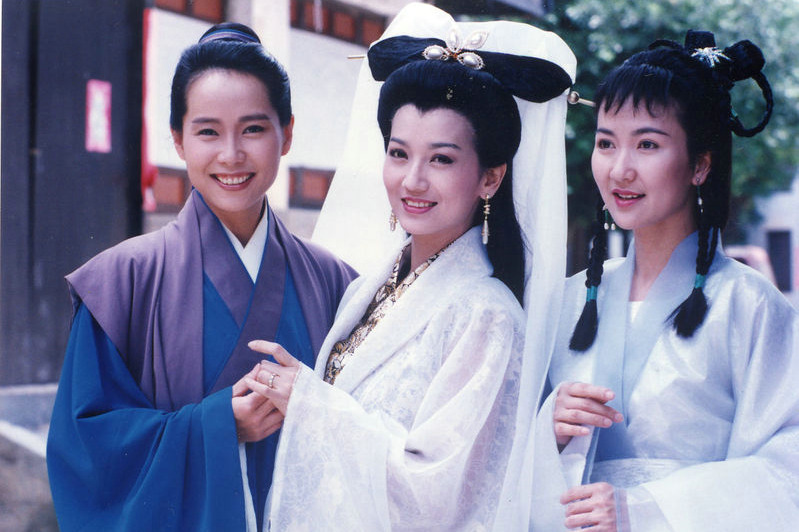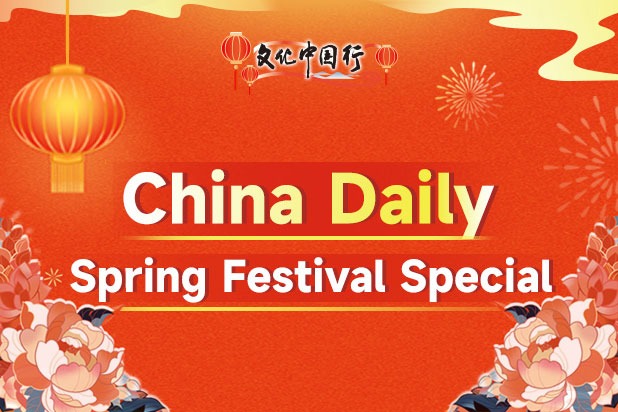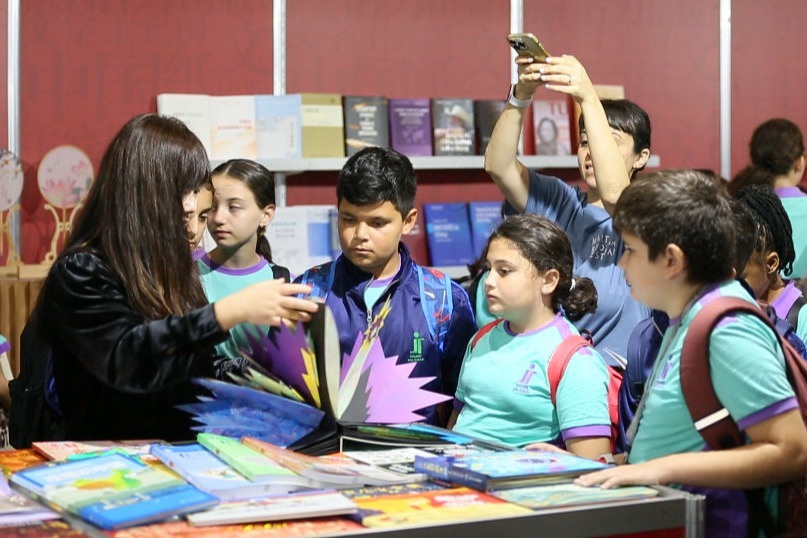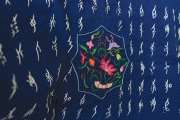What's on

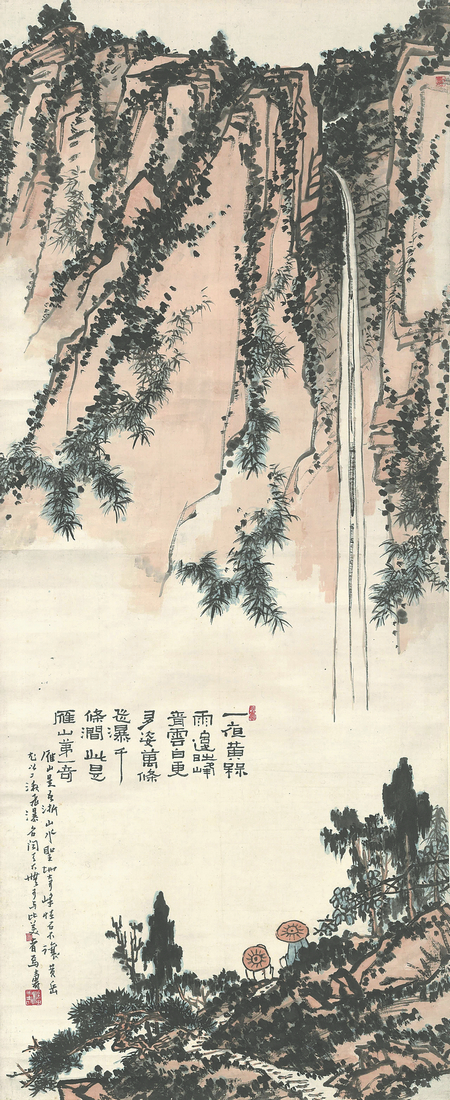
Visual feast
Around 500 pieces of art and craft from the collections of several major museums are now on show at Beauty in the Gathering, an exhibition running through to April 1 at Beijing's National Art Museum of China. Featured categories include Chinese painting and calligraphy, oils, watercolors, prints, lacquer, sculpture and folk handicrafts.
The exhibition provides a glimpse of the great variety of art collected by top public museums around the country, and distinctive features that vary from region to region. The China Art Museum in Shanghai, for example, is presenting selected work by the ink artists who sought to make Chinese painting address social change that are representative of the openness and diversity of the Shanghai School, which dates back to the beginning of modernization in China. The School later expanded to encompass other styles of art depicting Shanghai's unique cultural landscape.
Among the pieces from the Shaanxi Province Art Museum are vivid paper-cuts by Ku Shulan, a rural woman who left a legacy of imagination, vibrancy and energy. Displays from the Hubei Museum of Art, in Wuhan, Hubei province, demonstrate the province's rich tradition of lacquer work, which dates back centuries, as evidenced by artifacts found during archaeological excavations.
9 am-5 pm, closed on Mondays.1 Wusi Dajie, Dongcheng district, Beijing. 010-6400-1476.
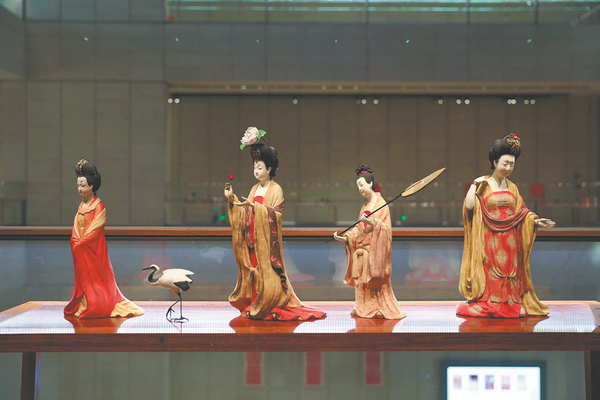
Colorful attire
Items of clothing from different eras, especially outfits worn by the upper classes, represent the economic development of the particular time, as well as its people's aesthetic views. The best examples of historical Chinese clothing have been recorded in famous paintings such as Ladies Wearing Flowers in Their Hair by Tang Dynasty (618-907) artist Zhou Fang, whose portrayals of female figures and their garments reveal the extravagance of the time. Chinese Clothing, Colorful Clay, now on at the Chinese Traditional Culture Museum, is a lively three-dimensional presentation of the court ladies of Zhou's work. The exhibition, which runs until May 12, traces the history of clothing by using painted clay figurines to reenact iconic scenes from figurative paintings such as Zhou's. The figurines are the work of artists from Tianjin Clay Figurine Zhang, a time-honored handicraft brand. Inspiration for other clay figures on show came from classic paintings such as the 10th century work, Evening Revels of Han Xizai by Gu Hongzhong, and the 18th century Palace Ladies by Ding Guanpeng.
9 am-5 pm, closed on Mondays. 16 Hujing Donglu, Chaoyang district, Beijing. 010-8799-1866.

Dragon motif
The arrival of the Year of the Dragon coincides with the 110th anniversary of the Summer Palace opening to the public. Among the celebrations is a show of 66 dragon-motif objects from the collection of Summer Palace at the Deheyuan or Garden of Virtue and Harmony. Auspicious Dragon in New Year brings together a variety of dragon patterns, as well as dragons in combination with other decorative motifs, such as dragons in clouds, circling dragons, dragons over running water, dragons surrounded by floral plants and nine dragon configurations. Objects on display include a jade seal with a dragon handle used by Emperor Qianlong of the Qing Dynasty (1368-1644), a calligraphic representation of the character long (dragon) by Dowager Cixi, who liked writing single-character pieces to gift to her ministers. Also on show is a cloisonne revolving vase which demonstrates the sophisticated techniques of Qing imperial cloisonne, with rich patterns that convey a sense of majesty. The exhibition ends on April 7.
8:30 am-5 pm, closed on Mondays.23 Gongmen Qianjie, Haidian district, Beijing. 010-6288-1144.


